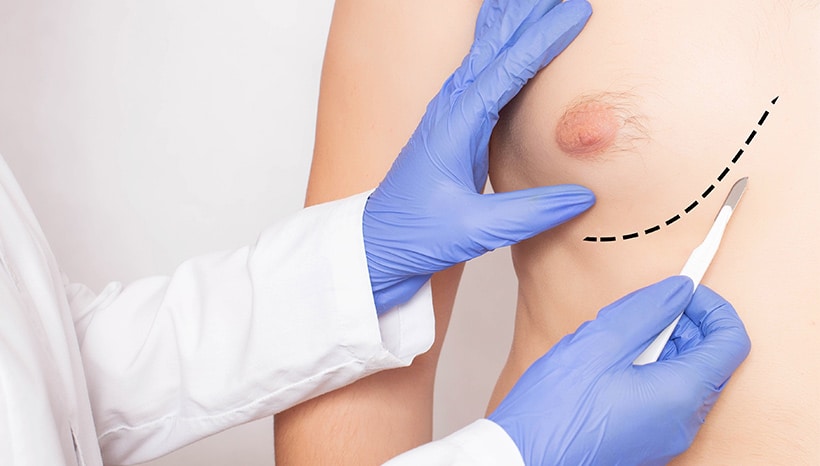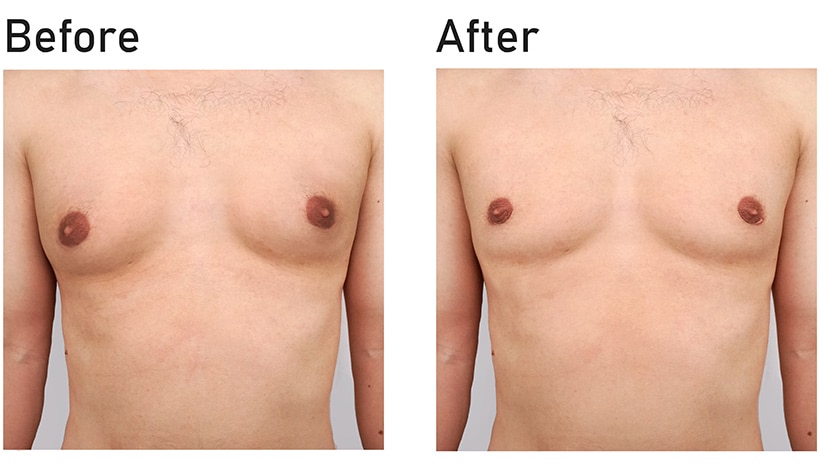Post-Operative Instructions for Gynecomastia Correction
NIGHT OF GYNECOMASTIA
- Movement is Important: Make sure you are up and walking around immediately after our surgery. When lying down in bed or on the couch, make sure you are moving your legs and ankles. Take deep breaths frequently to keep your lungs clear.
- Sleep: Sleep on your back with your head elevated about 30-40 degrees (2-3 pillows). Do not sleep on your side. Keeping your body more upright will minimize swelling and discomfort. Continue this for one to two weeks.
WATCH PRE-OP AND POST OP RECOVERY VIDEOS
MEDICATIONS AFTER GYNECOMASTIA
- Pain: You will be prescribed a pain medication for post-operative pain control. If your discomfort after surgery is not strong you are welcomed to take Tylenol in place of the prescribed medication. Do not take Tylenol with the pain medication, often the medication you are prescribed will have Tylenol in it. Do not exceed 4,000 mg of Tylenol in any 24-hour period. Take medication with food to minimize risk of nausea.
- Nausea: A common side effect after general anesthesia and strong medications. If you are experiencing nausea, we advise that you take your nausea medication.
- Constipation: You will experience constipation if taking narcotic pain relievers. MiraLAX or other over the counter laxatives are recommended. Do not wait to take until you are constipated.
- Medications to Avoid: Take only those medications approved or prescribed by your surgeon.

ACTIVITY AFTER GYNECOMASTIA
- Exercise: Normal daily activity may be resumed a few days after surgery. Exercise may be resumed 1-2 weeks after surgery. Remember to start easy and build back up to your previous exercise levels. Just know that swelling may transiently be worse with exercise.
- Arm Movement: Limit your arm use to daily activities such as brushing your teeth, eating, and combing/shampooing your hair. Avoid rigorous movement initially and minimize heavy weightlifting for the first week. Let pain be your limiting factor. If it hurts, please do not do it.
- Compression Garment/Vest: Expect to wear a compression garment/vest the entire first week, and then as wanted or suggested by your surgeon thereafter. The garment should fit snug but not too tight that you have trouble breathing or you develop wounds or blisters from the compression. Always wear your garment except for when you are showering or to wash it. This will help with minimizing swelling and help in contouring the body.
- Driving: Do NOT operate a vehicle or make important decisions until you have been off pain medications for 24 hours. Use good judgment.
- Return to work: Most patients require approximately 2-5 days off work depending on their job responsibilities. Returning to work with a light schedule initially or even parttime can be beneficial as well.
- Sexual Intercourse: Sexual activity can be resumed when you feel ready with no restrictions and incisions have adequately healed.
BATHING AFTER GYNECOMASTIA
- Showering: You may shower with assistance the day following surgery. Remove your garment. Incisions are covered with a waterproof dressing and require no attention. Replace garment after your shower.
- Hot Tubs/Baths/Swimming Pools: No tub baths or Jacuzzi until your incisions have healed, and approved by your surgeon, which is usually around 2 weeks. It is best to wait one month for hot tubs as they tend to have more bacteria than regular chlorinated swimming pools.
HOW TO TAKE CARE OF YOUR INCISIONS AFTER GYNECOMASTIA
- Incisions: Your incisions are covered with a waterproof dressing. No dressing changes or incision care is required. After your first postop visit, the dressing will be removed, and tape will be applied. Additional tape is provided so you can continue a planned scar regimen.
- Stitches: All stitches are dissolvable.
- Sun Exposure: Avoid and minimize sun exposure. Use an SPF 30 or greater when outdoors. Even a mild sunburn can worsen swelling and irritate an incision that is healing.
- Scar ointment: Scars are small and minimal and may take up to a year to fully heal. After your incisions have completely healed and when your doctor has told you it is safe, you can begin to use silicone-based ointment on your scars to improve healing.

WHAT TO EXPECT AFTER GYNECOMASTIA
- Drainage: Drainage can occur from the incision sites for the first 24-72 hours. The drainage will be blood tinged. You may use gauze or a light pad to reinforce post-op dressings if needed.
- Bruising: You can expect to have bruising. Most bruising will resolve after about 2-3 weeks. The bruise will go from a purplish color to a yellow/green shade as it starts to resolve.
- Swelling: You can expect swelling around the chest area that will resolve in the weeks to come.
- Itching: Itching at the incision sites is normal for a few days. You may take Benadryl to help with this.
- Pain: It is normal to experience tightness, pressure, soreness, itchiness, and fatigue for several days to weeks following surgery.
- Sensory Changes in Skin: You may feel reduced or heightened sensation in the nipples, incision sites, and breast tissue. This is normal. You can expect return of normal sensation after a few weeks to months.
- Final Result: It may take about 3-6 months to see final results.
DO NOT’S AFTER GYNECOMASTIA
- DO NOT apply hydrogen peroxide to incision sites. Keep postop dressings in place until follow-up.
- DO NOT soak in baths, jacuzzies or hot tubs until all incisions have fully healed.
- DO NOT take Aspirin, Ibuprofen, Naproxen, or other blood thinners until your surgeon advises you it is safe.
- DO NOT apply heating pads or ice packs to the treated areas unless otherwise instructed by your surgeon.
EMERGENCY SITUATIONS AFTER GYNECOMASTIA
WHEN TO CALL THE OFFICE (703-481-0002) OR GO TO THE HOSPITAL
- Signs of Infection: Spreading redness, worsening swelling, increased drainage or drainage of pus, worsening pain, warmth at incision site and temperature over 101 degrees Fahrenheit.
- Excessive Bleeding: If the dressings are saturated with bright red blood and you are having to make very frequent dressing changes.
- Other Emergency Situations: Shortness of breath or difficulty breathing, chest pain, lightheadedness that does not quickly resolve, severe vomiting, pain, or asymmetric swelling in your legs.